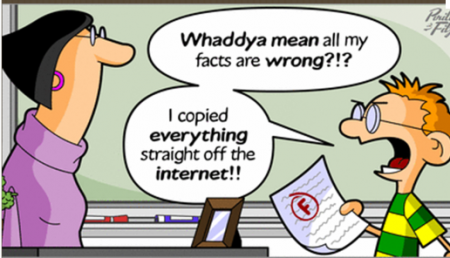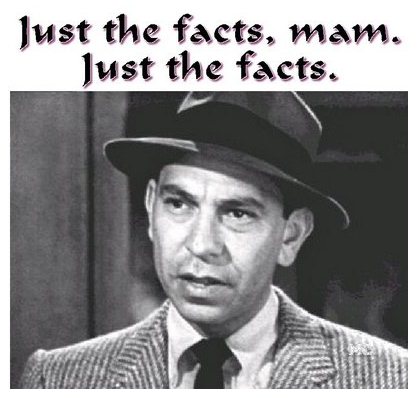March 11, 2017 – Every day on Kickstarter and Indiegogo, two of the most popular crowdfunding sites, announcements of new innovative products get posted with requests for funding. How do you discern what is real and what is fake?
The same goes for scientific research that is non-peer reviewed and posted to online open source journals. Is the data that backs the hypothesis real or fake? Is the methodology within the research sound? If not peer reviewed by noted experts how does one know?
And when a Donald Trump tweets or Fox News reports “facts,” how do we know what is real, and what now, thanks to Kellyanne Conway is called “alternative facts” or what we used to call “lies.”
For young people studying a subject in an age where Google Search has replaced going to the library and checking out relevant subject matter whether in books or journals, discerning truth from lies, and phony data from real, presents a challenge.

Librarians at California State University, Chico devised a test to help discern truth back in 2010. They called it CRAAP, an acronym that stands for.
Currency: looking at the timeliness of information
- When was it published or posted?
- Has it been revised or updated?
- Is it current or out-of-date?
- If links are provided do they work?
Relevance: does the information fit with the topic you are researching
- Does it relate to the topic or answer relevant questions?
- Who is its intended audience?
- Is it provided at an appropriate comprehension level?
- Is the source selection for information multi-source or single sourced?
- Are you comfortable using the source research results as relevant to your topic and what you intend to write?
Authority: the source of the information
- Who are your sources, the author, the publisher, a sponsor or organization?
- Are the author’s credentials noted, or is organization’s affiliations given?
- What qualifies the author as an expert to write on the topic?
- Have you verified contact information, web and email addresses, for author, publisher, and organization if appropriate?
- In checking URLs do they reveal anything about the author or source that might have you question the legitimacy of the authority?
Commercial online sources in the United States tend to be .com websites.
Educational sites usually are .edu.
Non-government, not for profit organizations are usually designated .org. Note that a .org may have a bias in representing facts based on who it represents.
The designation .net is associated with networks. These may have an inherent bias if they represent a large industry group.
But today it is American government sites, which require extra scrutiny considering the current Trump administration. These are designated .gov. Making a determination on whether the “facts” they describe are propaganda, “alternative facts” or not, requires additional scrutiny.
Accuracy: the reliability and validity of content
- Where does the information come from?
- What is the evidence and how is it supported?
- Has the information been vetted by experts, peer review or by other fact checking authorities?
- Can you verify the information through checking multiple other sources, or from your own personal knowledge?
- Does the language or tone appear biased or is it matter-of-fact and free of emotion?
- Are there spelling, grammar, or other typographical errors?
Purpose: the reason the information exists
- Determine from your reading the purpose of the information posted? Is it written to inform, to teach, to sell, to entertain, or to persuade?
- Are the authors or the organizations behind the content clear in defining their purpose in providing the content?
- Is the information fact, opinion, or propaganda?
- Does the point of view appear objective and impartial?
- Are there political, ideological, cultural, religious, institutional, or personal biases?
CRAAP comes with a score chart giving each category a maximum of 10 points.
A cumulative score of over 45 is excellent representing a reliable source.
A score of 40 to 44 is credible but may require some additional fact checking.
A source of 35 to 39 is deemed average and should encourage further research.
A 30 to 34 score is borderline between acceptable and not.
Anything below 30 is unacceptable.
Journalists have in the past sought 3 sources for any story they write to ensure the accuracy of content. But it is easy to be deceived by “alternative facts” and propaganda.
At Central Michigan University the library has put together an interesting set of examples of website research results referencing two sites, one that is easy to denote as a joke, and another that appears legitimate. In both cases the sites ar providing phony information and presenting “facts.” It is worth a visit to the web page to study the examples provided, applying the CRAAP test.
A last note. If you are as old as me then you may remember the television show, Dragnet. One of the detectives, Joe Friday, seen in the image below, sums up the subject very well. “Just the facts, mam. Just the facts.”
















